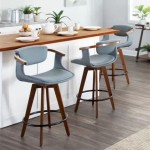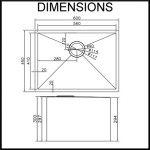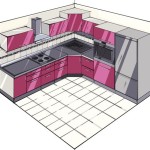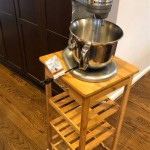Best Kitchen Mats: Anti-Fatigue Solutions for Comfort and Support
Spending long hours in the kitchen is a common reality for many, whether preparing elaborate meals, washing dishes, or simply assisting with culinary tasks. This prolonged standing can lead to discomfort, fatigue, and even long-term health issues such as back pain, foot pain, and joint stiffness. Investing in an anti-fatigue kitchen mat can significantly alleviate these problems by providing cushioning and support, promoting better posture and circulation. This article will explore the various aspects of anti-fatigue kitchen mats, highlighting key features, materials, and considerations to help individuals select the best option for their needs.
Understanding the Benefits of Anti-Fatigue Mats
Anti-fatigue mats are designed to reduce the strain and stress on the body caused by standing for extended periods. The primary benefit stems from the mat's ability to encourage subtle movements. When standing on a hard surface, the body tends to lock joints to maintain balance. An anti-fatigue mat, however, provides a degree of instability that forces the body to engage muscles and make tiny adjustments, promoting blood flow and preventing stiffness.
The cushioning effect of the mat also plays a crucial role. It absorbs the impact of standing, reducing pressure on joints and muscles in the feet, knees, hips, and back. This is particularly important for individuals who already experience joint pain or have pre-existing conditions. By reducing stress on these areas, anti-fatigue mats can contribute to greater comfort and overall well-being.
Furthermore, the enhanced circulation promoted by these mats can combat fatigue and improve energy levels. When blood flow is restricted due to prolonged standing, muscles become oxygen-deprived, leading to aches and tiredness. The subtle movements encouraged by the mat help to counteract this effect, keeping muscles nourished and energized.
Beyond the physical benefits, anti-fatigue mats can also contribute to improved focus and productivity in the kitchen. By minimizing discomfort and fatigue, individuals are better able to concentrate on their tasks and perform them more efficiently. This can be especially valuable for those who spend a significant amount of time cooking or working in the kitchen environment.
Key Features to Consider When Choosing an Anti-Fatigue Kitchen Mat
Selecting the right anti-fatigue kitchen mat involves considering several key features to ensure it meets individual needs and preferences. These features include the material, thickness, size, shape, and safety features of the mat.
Material: Common materials for anti-fatigue kitchen mats include rubber, foam, gel, and a combination of these. Rubber mats are known for their durability and resistance to wear and tear. They are often a good choice for high-traffic areas. Foam mats, particularly those made from high-density foam, offer excellent cushioning and comfort. Gel mats provide a more luxurious feel and conform to the shape of the feet, offering personalized support. Combination mats aim to combine the benefits of different materials, often incorporating a foam core with a durable rubber or vinyl surface.
Thickness: The thickness of the mat significantly impacts its cushioning and support. Thicker mats generally provide more comfort and are better at absorbing impact. However, excessively thick mats can create a tripping hazard. A thickness of approximately ¾ inch is often considered a good balance between comfort and safety. Individuals with pre-existing joint problems or who spend very long periods standing may benefit from a thicker mat.
Size and Shape: Kitchen mats come in various sizes and shapes to suit different kitchen layouts and needs. Common shapes include rectangular, square, and runner-style mats. The size of the mat should be appropriate for the area where it will be used. For example, a runner-style mat may be ideal for placing along a countertop, while a smaller rectangular mat may be suitable for use in front of the sink. Multiple mats can be used in larger kitchens to cover key work areas.
Safety Features: Safety is a paramount consideration when choosing a kitchen mat. Look for mats with non-slip backing to prevent them from sliding on the floor, especially on smooth surfaces like tile or hardwood. Beveled edges can also help to reduce the risk of tripping and make it easier to roll carts or other equipment over the mat. Some mats are treated with antimicrobial agents to inhibit the growth of bacteria and mold, which can be beneficial in a kitchen environment.
Cleanability and Maintenance: Kitchen mats are susceptible to spills and splatters, so ease of cleaning is an important factor. Mats with smooth, non-porous surfaces are generally easier to clean and maintain. Some mats are dishwasher-safe, while others can be wiped clean with a damp cloth. Consider the maintenance requirements when making a selection to ensure the mat remains hygienic and in good condition.
Comparing Different Types of Anti-Fatigue Mat Materials
The material of an anti-fatigue kitchen mat is a significant factor influencing its performance, durability, and comfort. Different materials offer distinct advantages and disadvantages, and understanding these can help individuals make an informed decision.
Rubber Mats: Rubber mats are known for their durability and resistance to wear and tear. They are a popular choice for commercial kitchens and other high-traffic areas. Rubber mats often have a textured surface to provide good traction and prevent slipping. They are also relatively easy to clean and maintain. However, rubber mats may not be as comfortable as other materials, such as foam or gel, and they can sometimes have a strong odor. Recycled rubber mats are an environmentally friendly option.
Foam Mats: Foam mats offer excellent cushioning and comfort, making them a popular choice for home kitchens. High-density foam mats are particularly effective at absorbing impact and reducing pressure on joints. Foam mats are typically lighter than rubber mats, making them easier to move and clean. However, foam mats may not be as durable as rubber mats and can be more susceptible to damage from sharp objects or heavy use. Closed-cell foam is preferable as it is water resistant and easier to clean.
Gel Mats: Gel mats provide a luxurious feel and conform to the shape of the feet, offering personalized support. They are often considered the most comfortable type of anti-fatigue mat. Gel mats are typically covered with a durable fabric or vinyl layer to protect the gel core. However, gel mats can be more expensive than other types of mats, and they may not be as durable in high-traffic areas. They can also be heavier and more difficult to move than foam or rubber mats.
Combination Mats: Combination mats aim to combine the benefits of different materials, often incorporating a foam core with a durable rubber or vinyl surface. These mats can offer a good balance of comfort, durability, and affordability. The foam core provides cushioning and support, while the rubber or vinyl surface protects the foam from damage and makes the mat easier to clean. Combination mats are a versatile option that can be suitable for a variety of kitchen environments.
When comparing different types of anti-fatigue mat materials, it is important to consider individual needs and preferences. Factors such as budget, durability requirements, and desired level of comfort should all be taken into account. It may be helpful to try out different types of mats in person to determine which one feels the best and provides the most effective relief from fatigue and discomfort.
In addition to the core material, the surface texture of the mat can also impact its performance. Textured surfaces provide better traction and help to prevent slipping, while smooth surfaces are easier to clean. Some mats feature raised patterns or ridges that can massage the feet and further enhance circulation.
Ultimately, the best anti-fatigue kitchen mat is one that meets individual needs and preferences in terms of comfort, durability, safety, and aesthetics. By carefully considering the various factors discussed in this article, individuals can make an informed decision and select a mat that will provide years of comfortable and supportive use in the kitchen.

The Best Anti Fatigue Kitchen Mat 2024 Tested Reviewed Epicurious

The Best Anti Fatigue Kitchen Mat 2024 Tested Reviewed Epicurious

Kitchen Mat Cushioned Anti Fatigue Floor Waterproof Non Slip Rug Pvc Comfort Standing Mats And Rugs For Office Home Etsy

Anti Fatigue Mats For Kitchen Floor Temash Rugs And Non Skid 2 Pieces Set Cushioned Comfort Standing Mat Home

Kitchen Comfort Mat Ultimate Anti Fatigue Floor Mats Gelpro

10 Best Kitchen Mats 2025 The Strategist

The Best Anti Fatigue Kitchen Mat 2024 Tested Reviewed Epicurious

2pcs Cushioned Anti Fatigue Kitchen Mats Set Non Slip Waterproof Black Rugs Ebay

10 Best Kitchen Mats And Rugs On Amazon 2024 Food Network

Dura Chef 7 8 Inch Anti Fatigue Kitchen Mats








